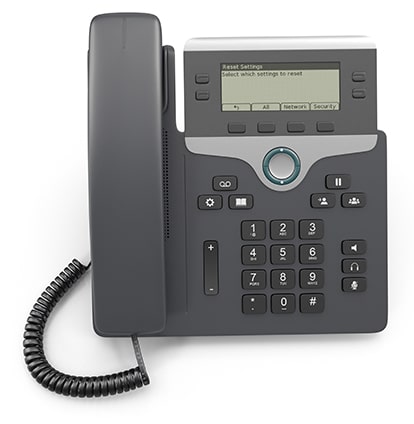30 Ideas For Improving Customer Service
The Importance of Customer Service
Studies have shown that customer service is one of the most important factors in customer loyalty and retention. According to a study by Zendesk, 86% of customers are willing to pay more for better customer service. Additionally, a study by Temkin Group found that customers who have a positive experience with a company are 80% more likely to do business with that company again.
It is also a critical component of a company’s reputation. According to a study by American Express, 33% of customers say they will consider switching companies after just one poor customer service experience. Additionally, social media has made it easier for customers to share their experiences with a company, making customer service a critical component of a company’s brand image.
Best Practices for Delivering Exceptional Customer Service
Delivering exceptional customer service requires a commitment to best practices and a customer-centric culture. Here are some best practices for delivering exceptional customer service:
- Train and empower your employees: Ensure that your employees receive adequate training and are empowered to resolve customer issues quickly and efficiently.
- Prioritize customer satisfaction: Make customer satisfaction a top priority and focus on building long-term customer relationships.
- Use technology to enhance customer service: Leverage technology, such as software and chatbots, to enhance the customer experience and improve efficiency.
- Respond quickly to customer inquiries: Respond to customer inquiries quickly and proactively to prevent issues from escalating.
The Benefits of Investing in Customer Service
Investing can have significant benefits for businesses, including increased customer satisfaction and loyalty, improved reputation and brand image, and increased revenue. Studies have shown that businesses with high levels of customer satisfaction achieve higher levels of revenue growth than those with low levels of customer satisfaction. Additionally, a study by Bain & Company found that increasing customer retention rates by just 5% can increase profits by up to 95%.
Investing can also help businesses differentiate themselves from competitors. By providing exceptional customer service, businesses can build strong customer relationships and increase customer loyalty, making it more difficult for competitors to poach customers.

Increasing customer retention rates by just 5% can increase profits by up to 95%
12 Tips On How To Analyze Customer Service Data
- Identify the metrics: Determine the metrics that you want to track and analyze. Common metrics for customer service include response time, resolution time, customer satisfaction score (CSAT), Net Promoter Score (NPS), and first call resolution rate (FCR).
- Collect the data: Collect the data using various sources such as customer feedback surveys, customer interactions, social media, and website analytics.
- Clean the data: Clean the data to remove errors, duplicates, and inconsistencies that can affect the accuracy of the analysis.
- Visualize the data: Use data visualization tools such as graphs, charts, and dashboards to present the data in a clear and concise manner. This will make it easier to identify trends, patterns, and anomalies.
- Analyze the data: Analyze the data to identify areas for improvement, strengths, and weaknesses in customer service. For example, if the response time is slow, you may need to evaluate your staffing levels, customer service processes, or automation tools.
- Create action plans: Create action plans to address the issues identified in the analysis. Prioritize the issues based on their impact on customer satisfaction and the resources required to implement the solutions.
- Monitor progress: Monitor progress regularly to determine the effectiveness of the action plans. Adjust the plans as needed based on the feedback from customers and the results of the analysis.
- Segment the data: Do it by different customer groups such as demographics, location, or product/service usage. This will help you to identify patterns and trends specific to each group and tailor your customer service strategies accordingly.
- Compare data over time: Compare customer service data over time to identify changes in customer behavior or preferences. This will help you to identify long-term trends and determine if your strategies are effective.
- Benchmark against competitors: Benchmark your metrics against those of your competitors to determine how you stack up against the competition. This will help you to identify areas where you need to improve and areas where you are excelling.
- Incorporate feedback from representatives: Insert feedback from your representatives into your analysis. They have firsthand experience with customers and can provide valuable insights into customer behavior and preferences.
- Use predictive analytics: Use predictive analytics to forecast customer behavior and preferences. This will help you to anticipate customer needs and provide proactive service.
11 Ideas For Improving Customer Service And Getting More Return Business
- Personalize the experience: Use customer data to personalize the customer service experience. Address customers by their name and tailor your recommendations and responses to their previous interactions and purchase history.
- Be proactive: Anticipate customer needs and provide proactive customer service. For example, if you know that a customer’s subscription is expiring soon, reach out to them in advance to offer a renewal discount.
- Respond promptly: Respond to customer inquiries and complaints promptly. Customers expect a quick response and delay can lead to frustration and negative feedback.
- Provide follow-up: Follow up with customers after a purchase or service interaction to ensure that they are satisfied and address any outstanding issues.
- Offer incentives: Offer incentives such as discounts, loyalty programs, or referral programs to encourage customers to return and make additional purchases.
- Empower employees: Empower customer service employees to make decisions and solve problems without needing to escalate to a higher authority. This will help to resolve issues more quickly and efficiently.
- Listen to feedback: Listen to customer feedback and use it to improve customer service. Encourage customers to provide feedback through surveys, social media, or online reviews, and take their feedback seriously.
- Provide education and resources: Provide educational resources such as blog articles, how-to guides, and videos to help customers get the most out of your products or services. This will improve their experience and increase their likelihood of returning.
- Simplify processes: Simplify processes such as returns, exchanges, and refunds to make it easy for customers to do business with you. This will help to reduce frustration and improve customer satisfaction.
- Be transparent: Be transparent with customers about your policies, pricing, and product features. This will help to build trust and loyalty and reduce the likelihood of negative feedback or complaints.
- Provide excellent training: While this was touched on before, it should be mentioned that return business will grow by providing excellent training for your customer service representatives to ensure that they have the knowledge and skills needed to provide excellent customer service. This will help to improve customer satisfaction and increase the likelihood of return business and increase profits.
7 Tips To Improve The Efficiency Of Your Customer Service
- Use technology: Utilize technology such as chatbots, email automation, or self-service portals to handle simple customer inquiries or common issues. This will reduce the number of representatives needed to handle such issues and free up their time to handle more complex problems.
- Automate workflows: Automate workflows to eliminate manual tasks, reduce errors, and improve response times. For example, use ticketing systems that route customer inquiries to the appropriate representative based on the issue.
- Train representatives: Train customer service representatives on how to handle different types of customer inquiries efficiently. Provide them with the necessary tools, knowledge, and skills to resolve issues promptly, accurately, and effectively.
- Streamline processes: Streamline processes to eliminate unnecessary steps or inefficiencies. Evaluate processes regularly to identify bottlenecks and make improvements.
- Use data analytics: Use data analytics to track and analyze metrics such as response time, resolution time, customer satisfaction, and first call resolution rate. Use this information to identify areas for improvement and make data-driven decisions.
- Provide self-service options: Provide self-service options such as a knowledge base or frequently asked questions (FAQ) section on your website to enable customers to find answers to common questions without having to contact customer service.
- Offer omnichannel support: Offer support through multiple channels such as phone, email, chat, and social media to provide customers with the flexibility to choose their preferred channel. This will improve customer satisfaction and reduce response times.


